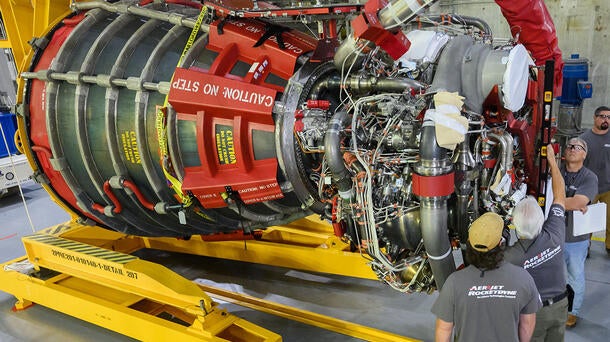The Quest for Ultimate Driving Power: Investigating the Peak of Engine Performance and Technological Advancements in the Automotive Market
In the world of vehicle design, the pursuit of optimum driving power has actually been an unrelenting pursuit that has actually unravelled through the development of engine design and the assimilation of innovative technologies. From the precise craftsmanship of burning engines to the fast innovations in electric propulsion systems, the automobile industry stands at the cusp of a brand-new age characterized by unmatched performance capacities. As researchers and designers dive deeper into the worlds of computational liquid characteristics and check out cutting-edge fuel modern technologies, the horizon of opportunities increases greatly. Keep tuned as we untangle the complex tapestry of technical advancements that are forming the future of vehicle power and performance.
Advancement of Engine Design

In addition, the assimilation of turbocharging and turbo charging technologies has actually revolutionized engine design by increasing power without significantly increasing engine size. These forced induction systems compress the intake air, enabling more gas to be combusted, therefore producing better power outcome from a smaller sized engine. This development has been specifically vital in boosting the performance of smaller displacement engines while preserving fuel effectiveness standards.

Performance-Enhancing Fuel Technologies
The execution of advanced gas modern technologies has actually substantially added to boosting engine performance in contemporary lorries. Biofuels, obtained from eco-friendly sources like algae, sugarcane, or corn, deal reduced exhausts and improved engine performance. In addition, gas additives and detergents are being developed to tidy engine elements, optimize combustion, and reduce rubbing, consequently increasing overall vehicle efficiency.
Improvements in Electric Propulsion
Substantial strides in electrical propulsion innovation have reinvented the automotive sector, paving the means for a new age of reliable and lasting transportation. Electric lorries (EVs) are acquiring popularity as a result of their ecological benefits and improvements in battery innovation, making it possible for longer driving arrays and much shorter billing times. Producers are investing greatly in research and growth to improve the efficiency of electrical propulsion systems, concentrating on boosting power output, improving energy efficiency, and lowering general weight.
One significant development in electrical propulsion is the growth of innovative electrical motors that provide higher torque and power density, leading to improved velocity and overall driving performance. Furthermore, regenerative braking systems have been refined to store and capture energy throughout slowdown, further increasing the efficiency of EVs.
In addition, the integration of wise modern technologies, such as man-made knowledge and predictive analytics, is optimizing the administration of electrical propulsion systems, making certain optimal efficiency under numerous driving conditions. These innovations in electric propulsion are reshaping the automobile landscape, driving the industry towards a more lasting and electrified future.
Influence of Computational Liquid Characteristics
With innovations in electric propulsion pushing the boundaries of vehicle modern technology, the assimilation of Computational Fluid Characteristics is playing an essential function in optimizing wind resistant performance and enhancing total performance in vehicle layout. Computational Fluid Dynamics (CFD) includes the usage of computer simulations to assess the flow of air around a car, allowing engineers to anticipate exactly how style adjustments will certainly influence the rules of aerodynamics without the need for pricey physical prototypes. By accurately modeling airflow patterns, CFD enables for the improvement of automobile shapes to decrease drag, enhance cooling, and improve security.
One trick advantage of using CFD in lorry design is the ability to iterate quickly, checking out many design variants to identify one of the most aerodynamically effective remedies. This iterative process causes cars that are not only sleeker and much address more visually attractive yet additionally a lot more ecologically pleasant and fuel-efficient. CFD allows designers to enhance airflow around components such as radiators, engine bays, and Recommended Site wheel wells, adding to enhanced efficiency and general driving experience. Finally, the combination of Computational Fluid Characteristics represents a substantial advance in the mission for best driving power and performance in the auto industry.
Future Fads in Engine Advancement
In the dynamic landscape of auto design, cutting-edge improvements are forming the future trajectory of engine technology. The future of engine design is marked by a solid focus on efficiency, efficiency, and sustainability. Manufacturers are progressively concentrating on developing engines that not only supply high power outputs yet also focus on ecological obligation by boosting and decreasing exhausts gas performance.
One famous trend in engine development is the increase of electrification. Hybrid and electric powertrains are obtaining traction as viable choices to standard combustion engines. These modern technologies supply the capacity for considerable reductions in carbon exhausts and increased energy efficiency, aligning with international initiatives to fight climate modification.
Furthermore, advancements in materials science my company and production strategies are allowing the manufacturing of lighter and a lot more resilient engine components. This shift towards light-weight products such as carbon fiber and light weight aluminum alloys adds to boosted efficiency and gas economic situation.
Conclusion
Finally, the quest of utmost driving power in the automotive industry continues to drive improvements in engine style, gas modern technologies, electrical propulsion, and computational fluid dynamics. The advancement of these modern technologies is forming the future of engine technology, leading the way for extra reliable and powerful vehicles (engines for africa). As the market remains to press the limits of what is possible, we can anticipate to see much more revolutionary developments in the pursuit for peak efficiency
One of the crucial turning points in engine layout development is the transition from standard carbureted engines to modern-day fuel-injected systems. By exactly metering the gas delivery to each cylinder, fuel-injected engines enhance combustion, resulting in far better efficiency and decreased ecological impact.
In addition, the integration of turbocharging and turbo charging technologies has actually reinvented engine layout by increasing power without substantially increasing engine dimension (engines for africa).The execution of sophisticated gas technologies has significantly added to boosting engine performance in contemporary automobiles. Additionally, fuel additives and detergents are being created to clean engine parts, enhance combustion, and minimize friction, thus improving total automobile efficiency